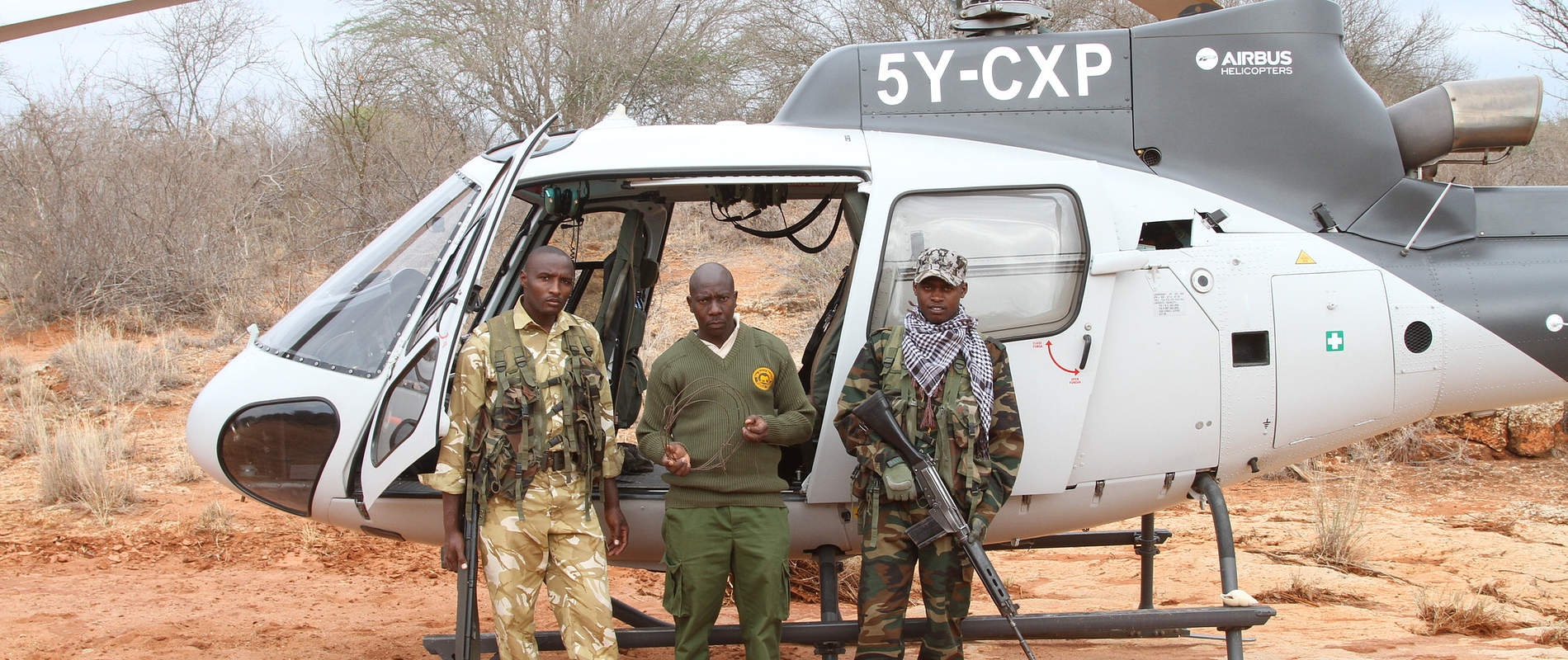As the drought, which has been gripping the southern sector of Tsavo East, continued throughout September, even greater numbers of elephant carcasses were discovered during the month.
As the drought, which has been gripping the southern sector of Tsavo East, continued throughout September, even greater numbers of elephant carcasses were discovered during the month. The victims in previous months, which were largely older weak females were more frequently juveniles this month. Juvenile elephant carcasses were discovered as well as collapsed babies, which were promptly rescued, but unfortunately some later succumbed to their starved state, whilst a number of them were able to be rescued just in time.

Despite the negative aspect of discovering so many dead and dying elephants, the role of the aircrafts cannot be underestimated. For each carcass discovered, a set of tusks can be retrieved before a poacher has a chance to happen upon them. Also, the teams have been able to quickly identify problem areas and focus their attention on increased patrols, with the vet teams ready to assist weak elephants and also with the ground teams who have been able to keep an eye out for potential orphans so that they can be rescued in time.
Two lone calves were discovered by the anti-poaching teams on the ground, and were rescued by the DSWT helicopter and airlifted to Nairobi to be cared for. Without this kind of quick response, young calves like this would have very little chance of survival. Given that the problem is lack of food rather than water shortages there is no solution to the problem, with it being simply impossible to feed a population of elephants the size of Tsavo in a year where drought grips much of the country.
Our eyes in the sky protect wildlife and prevent illegal activity
Thankfully poaching activity was relatively low in September but three poachers’ camps were found by the helicopter and destroyed as well as 2 old shooting blinds. On another occasion, the helicopter made strategic landings allowing rangers to discover and remove several wire snares intended for small to medium sized game. The helicopter has also been active in routine patrols with the tracker dogs and their handlers, always accompanied by armed rangers; it is this on-going surveillance that keeps the area free from poaching activity.
Elsewhere, the DSWT’s fixed-wing aircrafts continued to monitor the livestock situation, which has shown some improvement. In the southern sector of Tsavo East, large-scale livestock invasions have been almost eliminated with only a limited number of small herds still sighted being herded into the Park to graze. In the Chyulu Hills, a decrease in charcoal burning was also observed, however, an increase in livestock activity was noted, especially within the southern end. This was coupled with annual bushfires, which are set by herders trying to expand and improve existing grazing in the park.

Highlights during September included several rare sightings of giraffes drinking at watering holes and some great big cat sightings. There were also many encouraging signs of rain to come such as an unusually high concentration of nesting ostriches, flowering acacia trees as well as multiple sightings of flowering “Fireball lilies” which are said to emerge precisely 10 days before it rains.
We did, in fact, experience our first rain showers roughly a week after the first fireball lily was observed. It was not a huge amount, but enough to fill a few waterholes along the south-eastern boundary of the Park and draw several hundred elephants away from the Dika, Ndara, and Voi River, where elephants have been competing for the remaining browse. We can only hope that bigger, more sustained rains are on the way in the near future.
